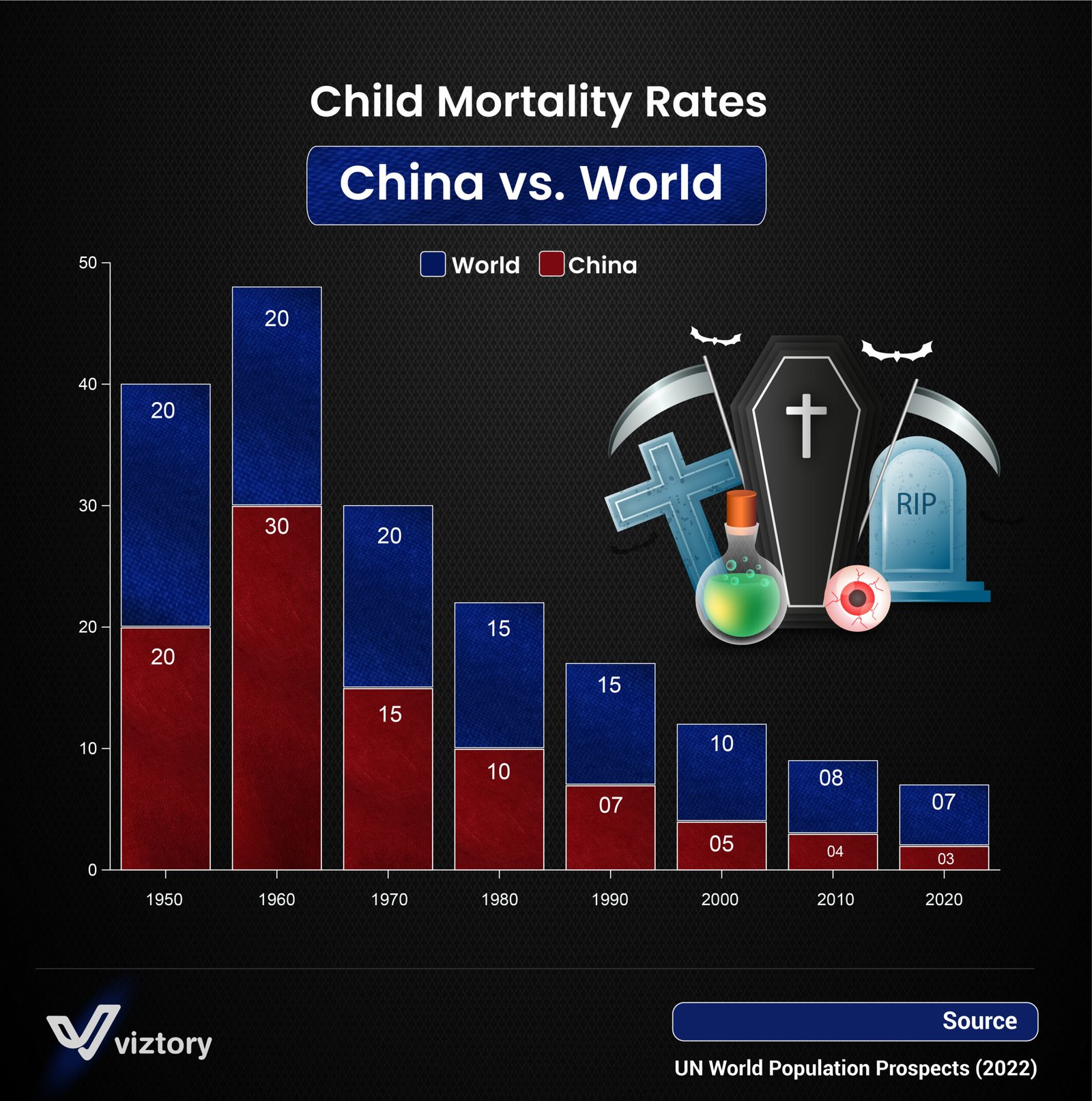Child Mortality Rates in China vs. the World
-
Sep, Tue, 2024
Child Mortality Rates in China vs. the World: How Healthcare Saves Lives
Introduction:
The image compares child mortality rates in China and the world from the 1950s to 2020. These figures reflect the significant progress China has made in reducing child mortality, compared to the global average. This improvement is primarily attributed to advancements in the healthcare sector, which has played a vital role in saving millions of lives, particularly among vulnerable populations such as children.
Advancements in Healthcare:
In the 1950s, child mortality rates in China were equal to the global average, both standing at around 20%. However, a significant shift began in the 1960s when global mortality rates rose to 30%, while China’s remained at 20%. This decline can be linked to improvements in the Chinese healthcare system, including the provision of vaccines and basic medical care.
Impact of Vaccination and Preventive Care:
One of the key factors in the reduction of child mortality was the expansion of vaccination programs and preventive healthcare. By 1980, China’s child mortality rate had dropped to 10%, compared to 15% globally. The Chinese government was quick to adopt new medical technologies and expand access to public health services, leading to significant improvements in children’s health.
Healthcare Reforms and Public Health Initiatives:
In the 1990s, mortality rates continued to decline, reaching 7% in China compared to 15% globally. This period marked a true turning point for Chinese healthcare, as the government began to offer comprehensive primary healthcare and expanded access to hospitals and health centers in rural areas. Public health awareness campaigns also played a vital role in changing people’s behavior towards disease prevention.
Modern Healthcare and Technology:
By 2020, child mortality rates in China had dropped to 3%, while the global rate stood at around 7%. This remarkable reduction is attributed to advancements in medical technology and the provision of advanced healthcare. Recent improvements include the introduction of telemedicine services in rural areas, the effective use of big data systems to monitor child health, and the enhancement of preventive healthcare through education and awareness.
Conclusion:
Through continuous investment in healthcare and the development of medical technology, China has drastically reduced child mortality rates, a major achievement in public health history. This progress demonstrates that improving healthcare, with a focus on prevention and health education, can make a significant difference in saving children’s lives and reducing the overall health burden on communities.

